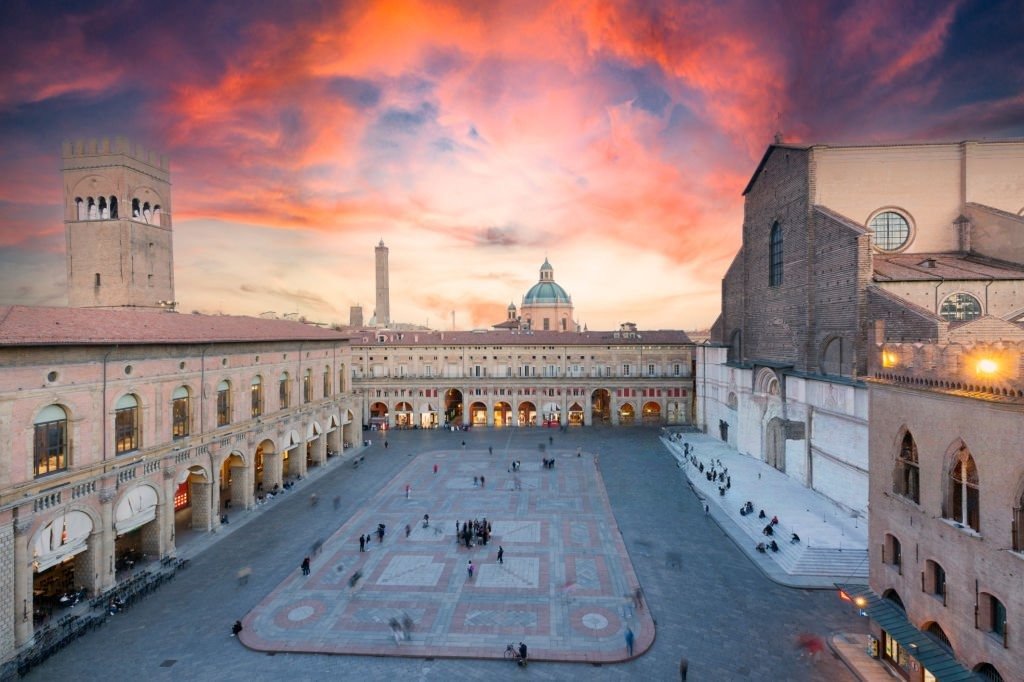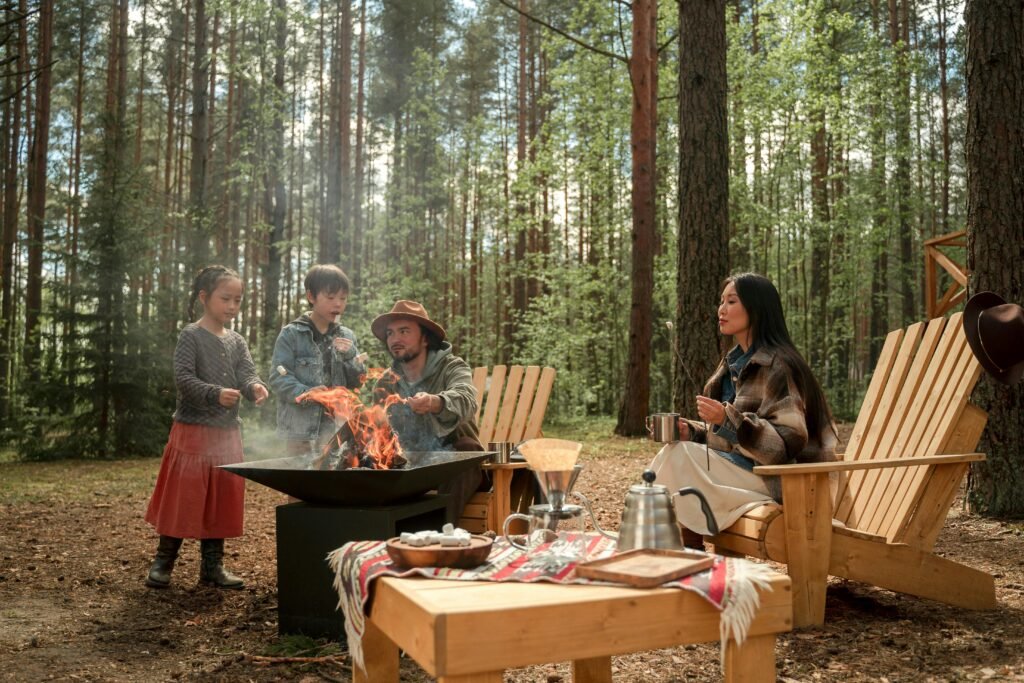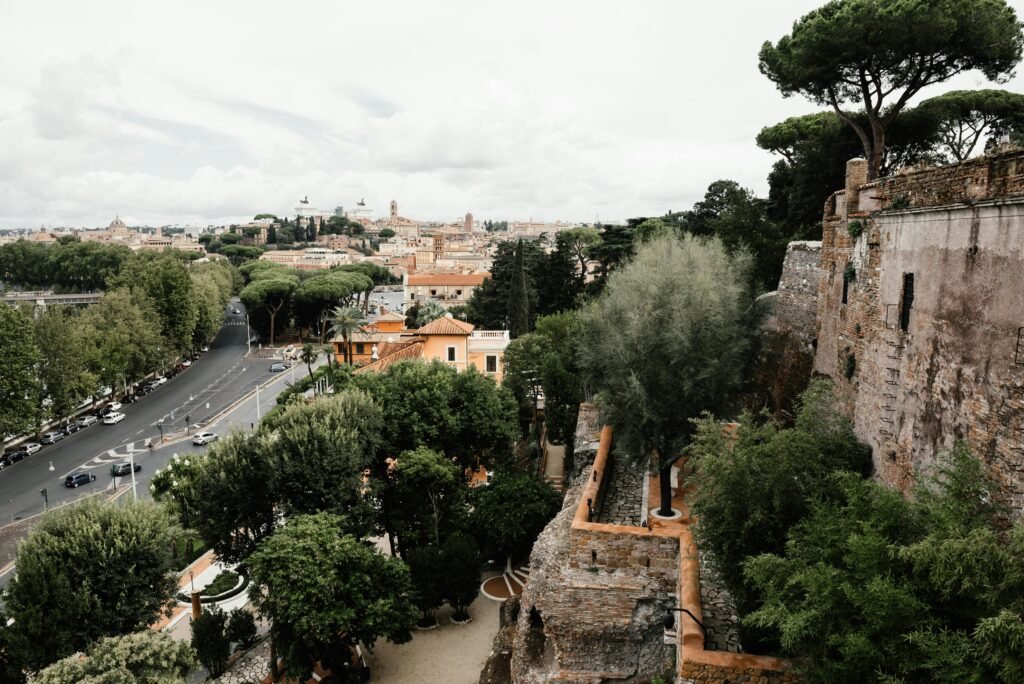Bologna, often overlooked by travelers rushing to Florence or Venice, is one of Italy’s most charming cities. Famous for its medieval towers, endless UNESCO-listed porticoes, and vibrant food culture, Bologna is a city that marries history, cuisine, and student energy in a way few others do.
With this guide, you will uncover what to do in Bologna, Italy, including must-see attractions, hidden treasures, culinary experiences, and practical tips to make your trip memorable.
Whether you have one day or three, you’ll leave with a deeper understanding of why Bologna is a true Italian treasure.
Note: If you’re planning to combine northern and central Italy, you might also enjoy our post on a Rome 3 Day Itinerary.
Why Visit Bologna? – The Soul of Italy’s Emilia-Romagna
If Rome is Italy’s stage and Florence its art gallery, Bologna is its dining table — and its library, and its heart.
1. A Less Touristy Gem with Rich Italian Culture
Bologna remains refreshingly local. You won’t find endless souvenir shops or overcrowded piazzas here. Instead, expect a slow rhythm, local dialects, and a community that celebrates everyday beauty — from morning markets to midnight wine bars.
2. The Birthplace of Italy’s Most Beloved Dishes
Ever tasted tagliatelle al ragù (what the world calls “spaghetti bolognese”)? It was born here. So were mortadella, tortellini, and lasagna verde. Bologna proudly calls itself “La Grassa” (The Fat One) — and for good reason.
Note: Want to dive deeper into regional flavors? Explore our guide to Testaccio Market in Rome and discover how Italians across regions celebrate food differently.
3. The “Three T’s” of Bologna: Towers, Tortellini, and Tiled Roofs
You’ll hear locals talk about Bologna’s “Three T’s” — Towers, Tortellini, and Tetti Rossi (red roofs).
- Towers: Once 180 strong, the skyline’s medieval towers still rise proudly.
- Tortellini: Tiny, hand-folded pasta pockets of joy.
- Tiled Roofs: A terracotta sea that glows gold at sunset — especially from the top of Torre degli Asinelli.
4. UNESCO-Listed Porticoes – Bologna’s Iconic Arches
Stretching for over 62 kilometers, Bologna’s porticoes are unlike anywhere else in the world. They’re not just architectural marvels — they’re the city’s open-air living room. Rain or shine, life unfolds beneath these covered walkways.
It’s no surprise they earned a spot on the UNESCO World Heritage List — a symbol of Bologna’s creativity, community, and continuity.
5. A City of Knowledge and Warmth
Home to Europe’s oldest university, founded in 1088, Bologna carries a young, curious energy. You’ll see it in student cafés, street art, and cultural festivals. It’s intellectual but never pretentious — an academic city with a beating heart.
So, is Bologna worth visiting? Absolutely. Whether you’re a foodie, history lover, or just seeking the Italy that locals love most, Bologna offers the perfect balance — elegant yet unpolished, traditional yet vibrant.
Travel Tips: Continue your Italian inspiration: see our Best Time to Visit Italy guide for planning tips, or read Travelling to Italy for entry info and transport hacks.
8 Top Things to Do in Bologna, Italy
Planning your trip and wondering what to do in Bologna, Italy?

Here are the top things to do and see in Bologna, Italy, in 2025 — a mix of classic landmarks, foodie experiences, and local favorites that reveal the city’s soul.
1. Explore the Historic Centre & Porticoes
Start your journey in Bologna’s Centro Storico, where terracotta hues, cobblestone lanes, and arched porticoes create one of Italy’s most atmospheric old towns.
Take your time to stroll beneath the UNESCO-listed porticoes, which stretch endlessly through the city like elegant hallways connecting life and art.
At the heart of it all lies Piazza Maggiore — Bologna’s living room. Here you’ll find:
- The Neptune Fountain (a Renaissance masterpiece locals affectionately call “Il Gigante”)
- The Palazzo d’Accursio, once the seat of government, is now home to art exhibitions and history
- And the Basilica di San Petronio, one of the largest churches in Europe
2. Climb Bologna’s Famous Two Towers
You can’t say you’ve seen Bologna without visiting its most iconic pair — Le Due Torri, or The Two Towers.
- Torre degli Asinelli, the taller of the two, stands at nearly 97 meters.
- Torre Garisenda, its leaning sibling, looks like it’s frozen mid-bow.
Climb the 498 wooden steps of Asinelli Tower, and you’ll be rewarded with a breathtaking view of Bologna’s red-tiled rooftops stretching toward the Apennine hills.
From up there, you’ll truly understand why Bologna is called “La Rossa” — The Red One.
Tip: Book your tower ticket online to skip queues. It’s one of the top things to do in Bologna, Italy, especially for photographers.
3. Visit Piazza Maggiore & the Basilica di San Petronio
The beating heart of the city, Piazza Maggiore, is where history and daily life intertwine. Street performers, locals sipping espresso, and travelers resting on cathedral steps — it’s Bologna in one frame.
The Basilica di San Petronio, one of the largest churches in the world, dominates the square. Inside, you’ll find an astonishing meridian line — a sundial built in the 17th century that tracks the sun’s movement with scientific precision.
4. Wander Through the University Quarter
Did you know Bologna is home to Europe’s oldest university, founded in 1088?
The University Quarter (Università di Bologna) is where that legacy lives on — buzzing with youthful energy, independent bookstores, and cozy cafés tucked between medieval courtyards.
Visit the Archiginnasio, once the main university building. Inside, the Anatomical Theatre is a masterpiece of carved wood where early medical students once studied human anatomy by candlelight.
Don’t miss the Biblioteca Comunale dell’Archiginnasio, a peaceful library filled with old manuscripts and quiet charm.
5. Take a Bologna Food Tour
If you do one thing in Bologna, make it about food.
Bologna is the beating heart of Italian cuisine — the birthplace of tagliatelle al ragù, tortellini in brodo, lasagna verde, and mortadella.
Join a Bologna food tour or take a local cooking class to learn how these dishes are made.
You’ll visit local markets, meet family-run pasta makers, and taste the difference between authentic ragù and tourist imitations.
Top picks for authentic dining:
- Trattoria di Via Serra (beloved by locals)
- Osteria dell’Orsa (casual and traditional)
- Da Cesari (a Bolognese institution)
Note: Love exploring food markets? Don’t miss our feature on the Market in Ventimiglia.
6. Explore Bologna’s Markets
Markets are where Bologna’s soul shines. Visit on a Friday and Saturday to see stalls bursting with colors, aromas, and chatter.
Top markets to explore:
- Mercato di Mezzo: A modern indoor market for gourmet bites.
- Mercato delle Erbe: Traditional produce market with cozy eateries.
- Quadrilatero: The oldest market district, alive since medieval times.
7. Discover Hidden Corners & Local Neighborhoods
Wander through Santo Stefano, home to the Seven Churches complex — one of the city’s oldest spiritual sites.
Head to Via del Pratello for a taste of local nightlife, street art, and community spirit.
And when you need a breather, relax at Giardini Margherita, Bologna’s lush central park, where locals picnic and musicians play under the trees.
8. Bologna’s Food & Drink Scene
If Rome is Italy’s stage and Florence its museum, Bologna is its kitchen.
Here, meals are more than sustenance — they’re a celebration of life, family, and flavor. The city’s nickname, “La Grassa” (The Fat One), proudly honors its passion for rich, hearty food.
Bologna Itinerary – How to Spend 1, 2, or 3 Perfect Days
If you’re wondering how many days to spend in Bologna, here’s the truth — even one day here will charm you, but two or three days will let you really taste and feel the city beyond the postcards.

1. What to Do in Bologna in One Day?
If you’ve only got a day in Bologna, focus on the heart of the city — its history, food, and skyline views.
Morning – Explore the Historic Core
Start your day in Piazza Maggiore, the beating heart of Bologna. The square is surrounded by landmarks like:
- Basilica di San Petronio – grand, half-finished, and full of stories.
- Palazzo d’Accursio – City Hall and art museum rolled into one.
- Fountain of Neptune – one of Bologna’s most photographed icons.
Then wander through the Quadrilatero Market, where you can snack on mortadella, local cheese, and fresh fruit.
Afternoon – The Towers and Streets
Walk to Le Due Torri — the Two Towers that define Bologna’s skyline.
Climb the taller one, Torre degli Asinelli, if you’re up for 498 steps (the view is worth every breath).
Afterward, stroll under Bologna’s UNESCO-listed porticoes — they stretch for over 60 kilometers across the city!
Evening – Eat Like a Bolognese
For dinner, head to Osteria dell’Orsa or Trattoria di Via Serra — order tagliatelle al ragù or tortellini in brodo.
End your night with a scoop of gelato from Cremeria Funivia and a gentle evening walk.
2. Bologna 2-day Itinerary
If you’re staying for 48 hours, it’s time to go beyond the basics.
Day 1: Follow the one-day plan above to get your bearings.
Day 2: Museums, Local Life & Aperitivo Time
Morning: Visit Museo di Palazzo Poggi (science and anatomy museum from the 1500s) or the Museo della Storia di Bologna to understand how this medieval university city shaped Europe’s culture.
Lunch: Grab lunch at Mercato delle Erbe — less touristy, more local. Order lasagna verde or a plate of fresh tortellini.
Afternoon: Take a slow walk through Giardini Margherita, Bologna’s biggest park. It’s where locals relax, picnic, and chat.
Evening: Enjoy aperitivo in Le Stanze — an old chapel turned bar — before dinner at Da Cesari for a romantic, candlelit meal.
3. Bologna 3-day Itinerary
If you’re lucky enough to have a third day, use it to explore Bologna’s surroundings — Emilia-Romagna is bursting with treasures just a short train ride away.
Option 1: Modena – Just 25 minutes by train
Famous for balsamic vinegar, the Ferrari Museum, and Modena Cathedral (a UNESCO site).
Don’t miss Osteria Francescana if you’re into world-class dining (book months ahead).
Option 2: Parma – 1 hour by train
Home of Parmigiano Reggiano and Prosciutto di Parma. Visit a dairy to observe the cheese-making process and sample fresh shavings directly from the wheel.
Option 3: Dozza – 40 minutes by car or bus
A tiny hilltop town known for its painted walls and medieval fortress — a true hidden gem.
Option 4: Florence (Day Trip) – 35 minutes by high-speed train
If you want a quick glimpse of Renaissance beauty, Bologna makes a great base for Florence.
Practical Travel Tips for Visiting Bologna Italy
Whether it’s your first visit or a return trip, knowing the practical aspects of Bologna travel will make your experience smoother, safer, and more enjoyable. From transportation to budget tips, these insider insights cover everything you need to navigate the city like a local.

How to Get to Bologna?
Bologna sits at the crossroads of Italy, so it’s incredibly easy to reach from anywhere in the country.
- By Train:
Bologna Centrale is one of Italy’s main railway hubs. High-speed trains connect it to Florence (35 mins), Milan (1 hr), Venice (1.5 hrs), and Rome (2 hrs). - By Plane:
Fly into Bologna Guglielmo Marconi Airport (BLQ), just 7 km from the city center. A quick Marconi Express monorail will get you downtown in under 10 minutes. - By Car:
Driving is fine if you plan day trips (like Modena or Parma), but parking in central Bologna can be tricky. Most travelers rely on public transport or walking.
Getting Around Bologna
Bologna is highly walkable, especially the Centro Storico, where most attractions in Bologna, cafes, and markets are clustered.
- Walking: The historic center is compact; strolling is often faster than driving.
- Bike Rentals: Bike-sharing programs and rental shops make pedaling under porticoes easy.
- Buses & Taxis: Local buses connect neighborhoods, and taxis are available but limited.
Best Time to Visit Bologna
Bologna experiences a temperate continental climate:
- Spring (April–June): Mild weather, blooming gardens, perfect for walking tours.
- Autumn (September–October): Harvest season, ideal for food tours and festivals.
- Summer (July–August): Hot, crowded, and locals leave for vacation — not ideal.
- Winter (December–February): Cold, quieter, but festive with Christmas markets.
Conclusion
Hopefully, this guide about what to do in Bologna, Italy, helped you realize Bologna’s real magic lies not in its monuments, but in the rhythm of its daily life. So, if you’re planning your next Italian escape, make sure Bologna is on your list.
Whether it’s a 1-day stopover or a 3-day foodie adventure, Bologna’s charm makes it a perfect stop for travelers on an Italy honeymoon, offering romantic strolls, intimate dining, and unforgettable memories.




